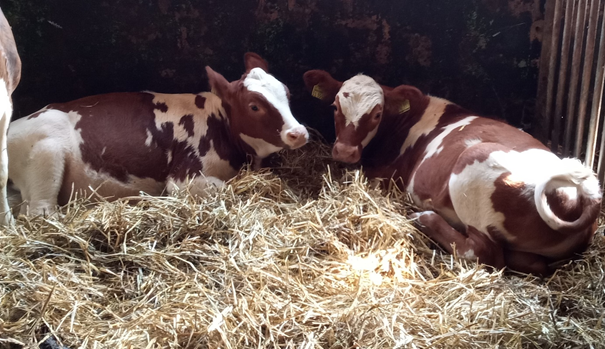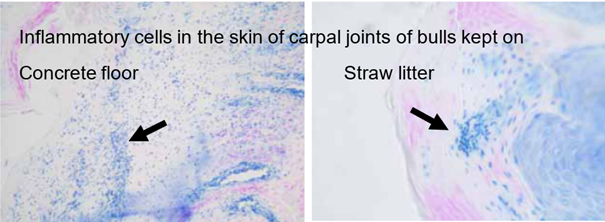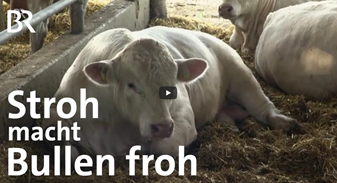
https://ec.europa.eu/eip/agriculture/en/find-connect/projects/bovine-beef-innovation-network-europe
In intensive beef production in Europe, finishing beef cattle are typically reared in pens with fully slatted (concrete) floors. However, concrete floors have been suggested to be a contributing factor in the development of lameness.
Lameness in cattle has major economic and animal welfare implications. The impact of lameness on animal welfare is usually long lasting and associated with substantial pain, resulting in premature culling and adversely affecting performance. Soft floors can prevent lameness and improve cattle mobility.
Cattle also have a clear preference to stand and walk on straw bedding and rubber flooring compared with concrete flooring.
Deep litter provides a soft and more comfortable surface for cattle along with a better grip that prevents lesions and swellings due to slipping.
Shorter lying down duration and the total absence of abnormal lying down sequences have been observed in deep litter.

In the following video a German beef farmer explains why he changed to litter (German talk): click the pic to open the link

Negative aspects of deep litter in some studies are overgrown claws and the poor cleanliness of the bulls despite larger space allowance. A proper litter management is necessary to maintain sufficient cleanliness of the bulls. Dirty bulls at the time of slaughter have been shown to increase the risk of meat for contamination by harmful bacteria.
The main reason for adopting this approach was preventing injuries and inflammations on the legs resulting in healthier bulls. However, they also state that keeping fattening bulls on litter increases work time that is often not reflected in the final product price. Animals are rotated to freshly littered pens every 6 weeks. Cleaning such a pen takes approximately one hour, thus enough time needs to be allocated per year for this task.

Chronic mechanical pressure to the carpal joints results in a significant thicker skin (due to hyperplasia reaction in the stratum corneum) and an increase in elastic fibres in the dermis of bulls on hard floor compared to soft ground such as straw litter or mats. Shearing forces can cause minor injuries that lead to inflammatory reactions in the skin. Unexpectedly, inflammatory cells also appeared in the skin when bulls were kept on straw litter. It should be noted that persistent dung-like moisture on the skin (under the acquired carpal pads) can also reduce the integrity of the epidermal barrier function.
Literature: Kneer M (Diss. 2009) Histological investigation of the dorsal carpal joint integument of differently housed fattening bulls.
For more information on deep litter (Good Practice) on the BovINE knowledge hub see: Fattening bulls on straw with automated bedding and feeding. The future in view.
This practice has an impact across:
- Socio-economic resilience:
- Additional costs because of straw and labour time for the litter management
- Reduced early culling due to decreased lameness incidents
- Animal health and welfare:
- Less lameness, less hairless patches and
- Increased animal welfare and comfort and increased consumer acceptance
- Product efficiency and meat quality:
- leaner carcasses due to increased activity
- Good straw management and therefore more frequent bedding in finisher units is required, as dirty bulls have been shown to increase the risk of meat being contaminated by harmful bacteria when slaughtered
- Environmental sustainability:
- Higher weight gain leads to a better product efficiency and to shorter fattening periods, which can positively affect environmental sustainability
